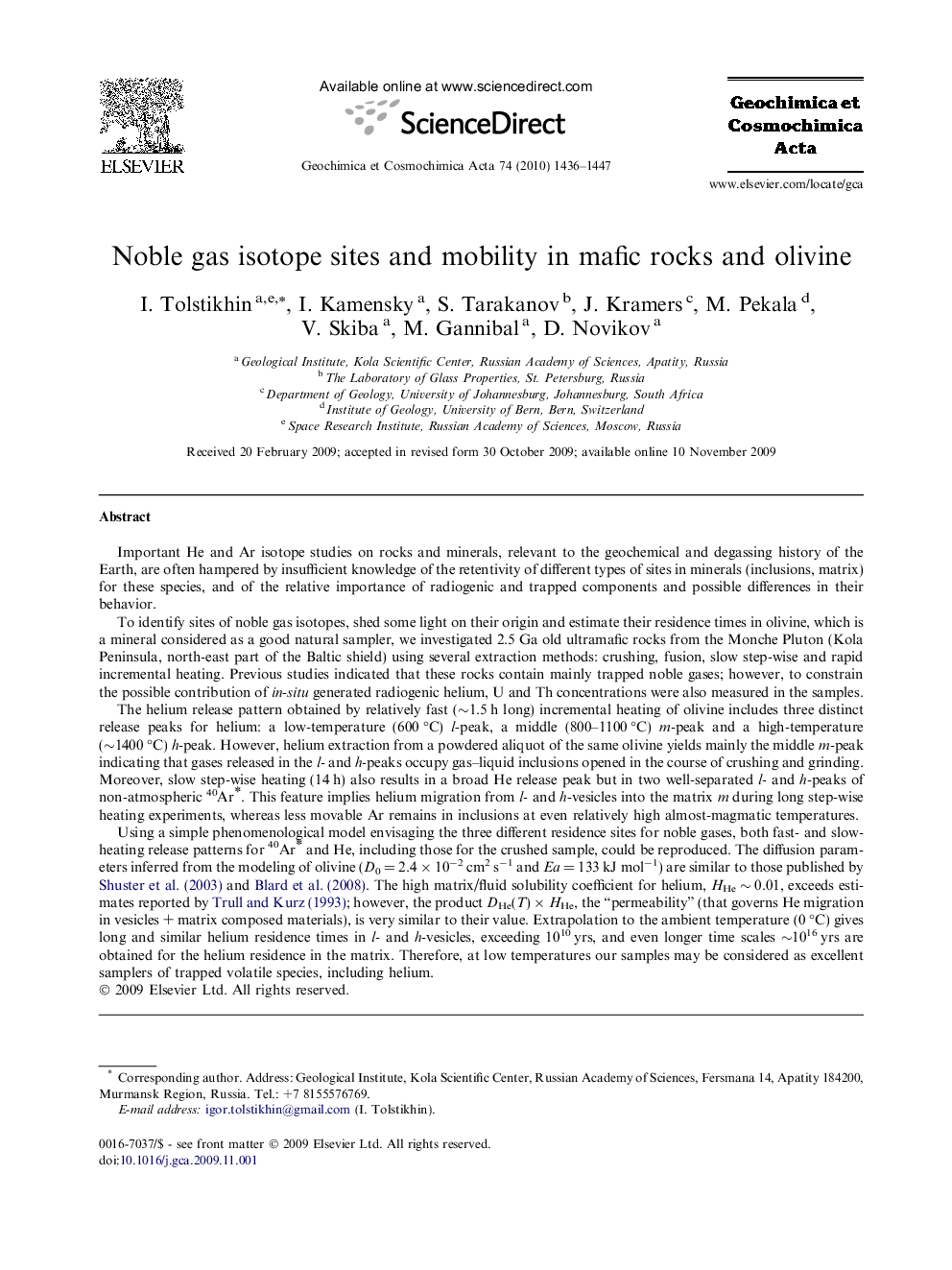| کد مقاله | کد نشریه | سال انتشار | مقاله انگلیسی | نسخه تمام متن |
|---|---|---|---|---|
| 4703757 | 1352878 | 2010 | 12 صفحه PDF | دانلود رایگان |

Important He and Ar isotope studies on rocks and minerals, relevant to the geochemical and degassing history of the Earth, are often hampered by insufficient knowledge of the retentivity of different types of sites in minerals (inclusions, matrix) for these species, and of the relative importance of radiogenic and trapped components and possible differences in their behavior.To identify sites of noble gas isotopes, shed some light on their origin and estimate their residence times in olivine, which is a mineral considered as a good natural sampler, we investigated 2.5 Ga old ultramafic rocks from the Monche Pluton (Kola Peninsula, north-east part of the Baltic shield) using several extraction methods: crushing, fusion, slow step-wise and rapid incremental heating. Previous studies indicated that these rocks contain mainly trapped noble gases; however, to constrain the possible contribution of in-situ generated radiogenic helium, U and Th concentrations were also measured in the samples.The helium release pattern obtained by relatively fast (∼1.5 h long) incremental heating of olivine includes three distinct release peaks for helium: a low-temperature (600 °C) l-peak, a middle (800–1100 °C) m-peak and a high-temperature (∼1400 °C) h-peak. However, helium extraction from a powdered aliquot of the same olivine yields mainly the middle m-peak indicating that gases released in the l- and h-peaks occupy gas–liquid inclusions opened in the course of crushing and grinding. Moreover, slow step-wise heating (14 h) also results in a broad He release peak but in two well-separated l- and h-peaks of non-atmospheric 40Ar∗. This feature implies helium migration from l- and h-vesicles into the matrix m during long step-wise heating experiments, whereas less movable Ar remains in inclusions at even relatively high almost-magmatic temperatures.Using a simple phenomenological model envisaging the three different residence sites for noble gases, both fast- and slow-heating release patterns for 40Ar∗ and He, including those for the crushed sample, could be reproduced. The diffusion parameters inferred from the modeling of olivine (D0 = 2.4 × 10−2 cm2 s−1 and Ea = 133 kJ mol−1) are similar to those published by Shuster et al. (2003) and Blard et al. (2008). The high matrix/fluid solubility coefficient for helium, HHe ∼ 0.01, exceeds estimates reported by Trull and Kurz (1993); however, the product DHe(T) × HHe, the “permeability” (that governs He migration in vesicles + matrix composed materials), is very similar to their value. Extrapolation to the ambient temperature (0 °C) gives long and similar helium residence times in l- and h-vesicles, exceeding 1010 yrs, and even longer time scales ∼1016 yrs are obtained for the helium residence in the matrix. Therefore, at low temperatures our samples may be considered as excellent samplers of trapped volatile species, including helium.
Journal: Geochimica et Cosmochimica Acta - Volume 74, Issue 4, 15 February 2010, Pages 1436–1447